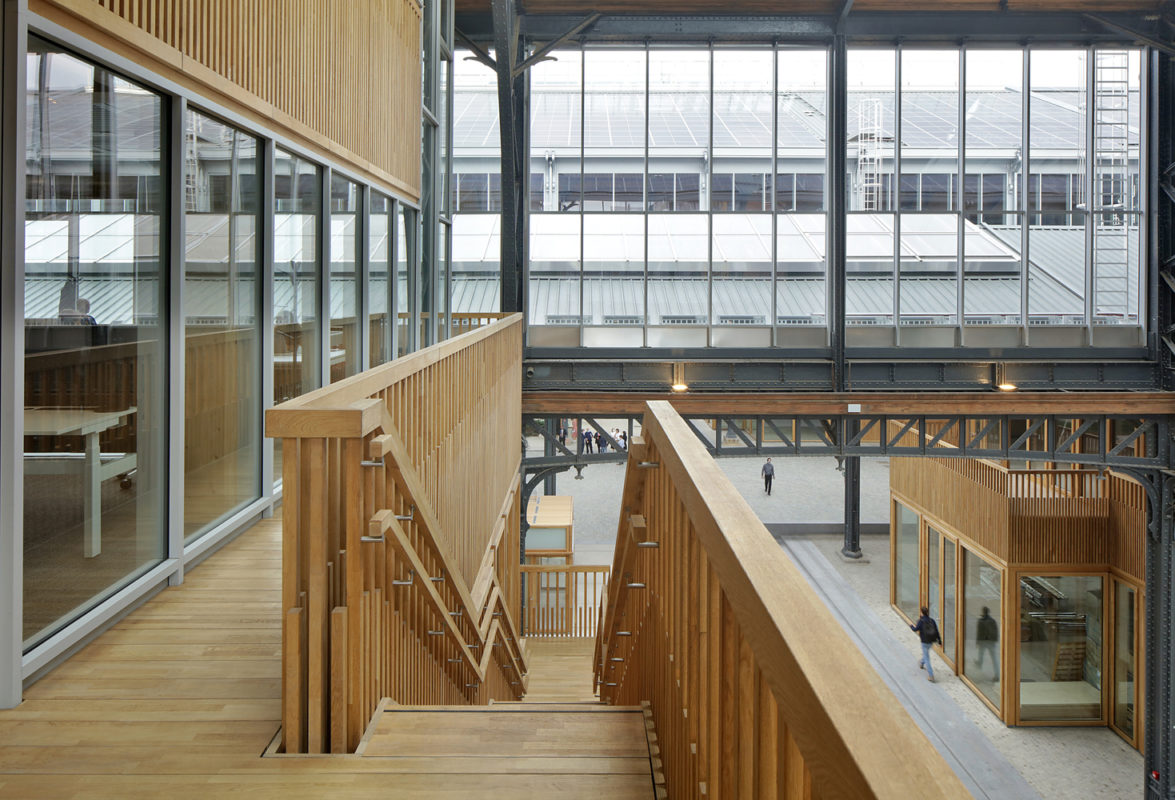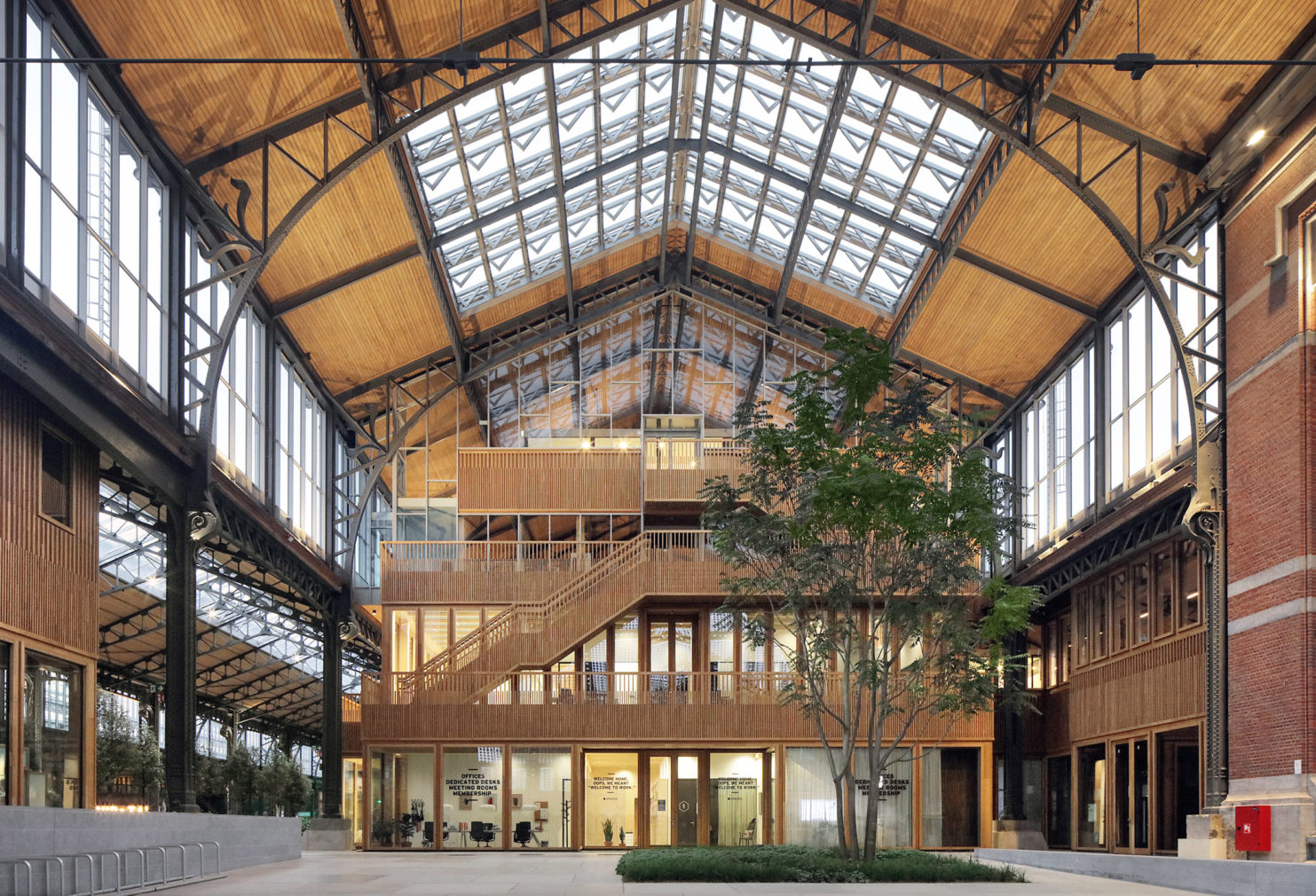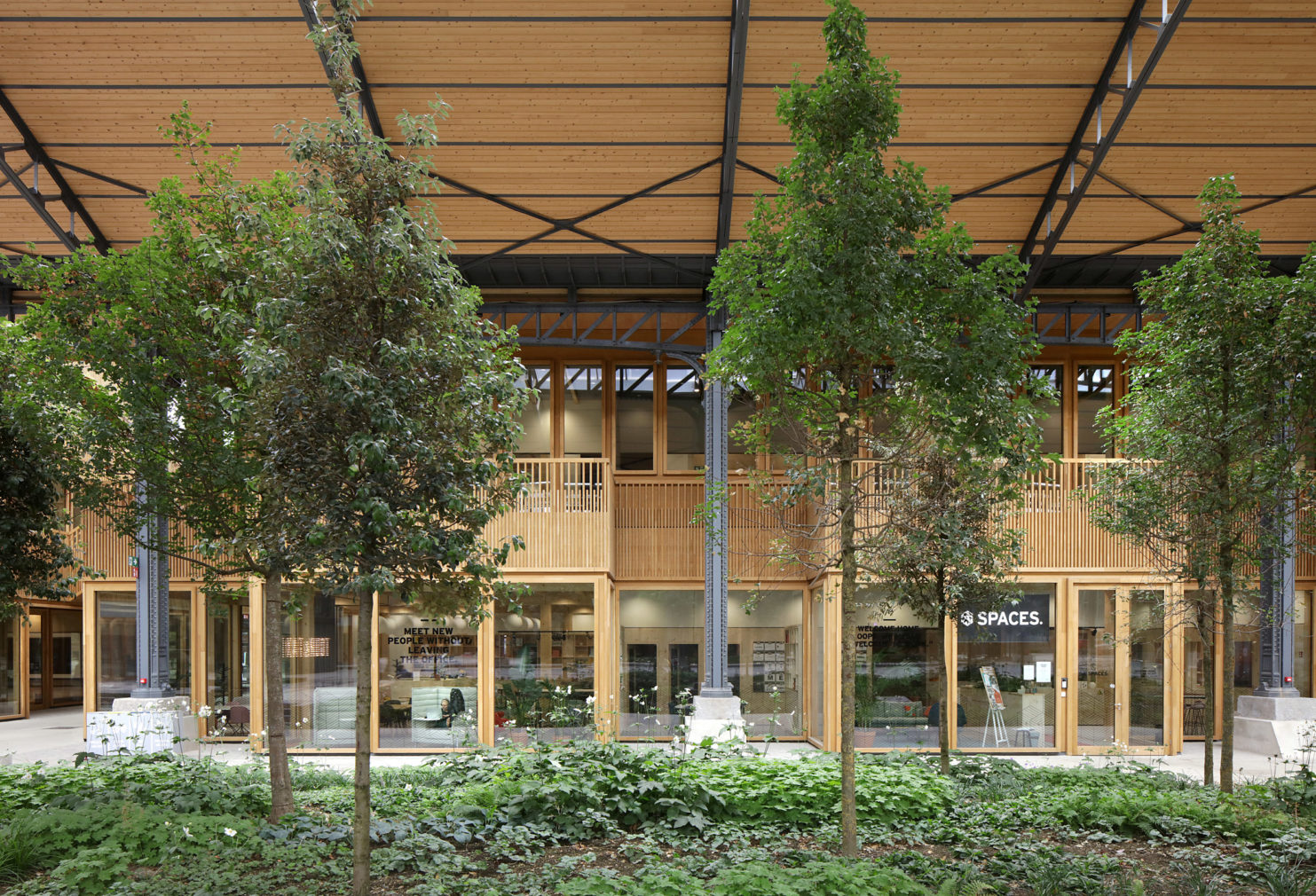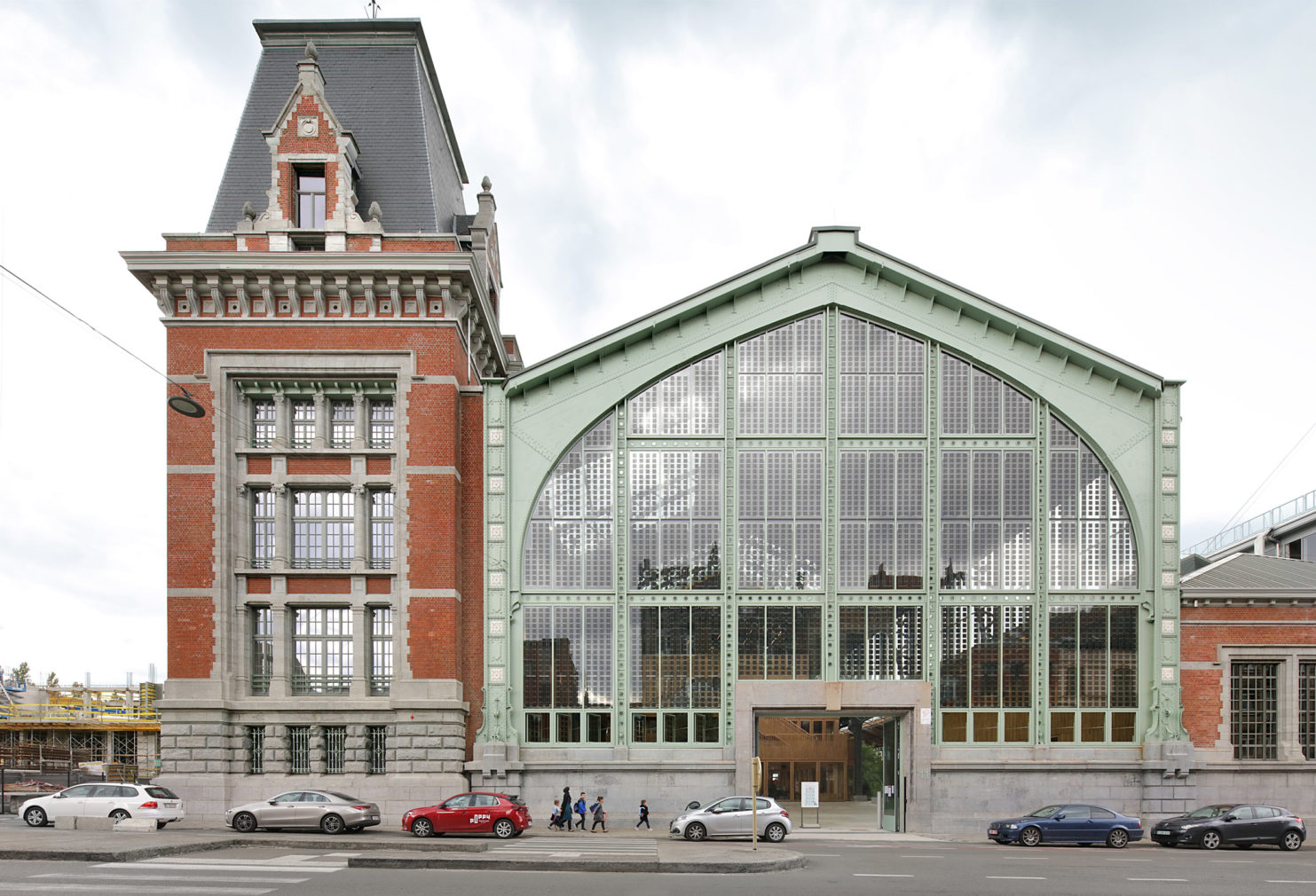Hundreds of cross-laminated timber panels have been used to expand the defunct Gare Maritime freight station in Brussels into the city’s newest ‘district’ – a mixed-use hub housing startups, shops, restaurants and public events.
The original structure, constructed in 1902 with steel and glass, was one of Europe’s biggest train stations, welcoming goods from across the continent. With its adaptive reuse, the Gare’s historic bones form the envelope of the new45,000 sq m neighbourhood, designed by Neutelings Riedijk Architects.

Photography: Filip Dujardin

Photography: Filip Dujardin

Photography: Filip Dujardin

Photography: Filip Dujardin

Photography: Filip Dujardin
Rather than concrete, the architects used cross-laminated timber (CLT) to construct the new volumes, which is lighter and creates less carbon emissions. It also allows for Gare Maritime’s industrial architecture to remain visible, with steel girders contrasted by wood.
Modular components allow the station’s interiors to be rearranged as needed, with much of the original halls left open to create space for events and gatherings.
Plants have been added on either side of the Gare Maritime’s interiors, bringing in some much-needed greenery and giving visitors the sense of walking down a tree-lined boulevard.





















